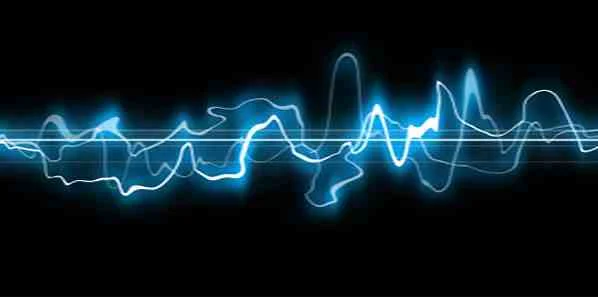The idea of ultrasound was initially derived by an expert in earthquake waves, who realised that sound waves reflected from human bodies could not only reveal their internal shape but also their condition. The concept is that earthquakes create waves in the earth that are interpreted with seismographs. Similarly, ultrasound devices make high-frequency waves, and then construct images of hidden structures from the echoes.
Ultrasound is widely used today as it is a safe, affordable and non-invasive technique to see the internal structure of the human body, including the human foetus, tendons and ligaments. Ray Vanderby, Professor of Biomedical Engineering and Rehabilitation at the University of Wisconsin-Madison has developed an ultrasound method that could analyse the condition of soft human tissue.
Vanderbyís student Hirohito Kobayashi who was quite familiar with seismology and earthquakes, had an insight into the way waves propagate. The two then developed equations that described the physics of sound waves in living tissue. The process has already been patented by Vanderby through the Wisconsin Alumni Research Foundation, and the technology has been licensed to Echometrix, a start-up company that the two established in 2007.
The Echometrix software will have the ability to interpret the image generated by the ultrasound machine. "We can put this software on a laptop and use images from any ultrasound instrument", says Vanderby.
Conventional ultrasound machines also analyse waves, but sometimes ultrasound operators need to stretch the tissue to get a better picture. This indicates that the intensity of the waves is affected by the condition of the soft tissue. Vanderby points out that waves tend to travel faster in stiff material as compared to soft material, and the amount of waves that bounce back depends on the level of stiffness. Thus, when analysing tendons and ligaments, changes in the stiffness can indicate whether the tissue is intact, damaged or healing. "We can measure from the ultrasound image how physically compromised it is", says Vanderby.
The Echometrix software was approved by the U.S. Food and Drug Administration in 2012, and has been used in human studies to monitor treatment of injuries to hand tendons, the Achilles tendon and the plantar fascia. It is believed that the software can measure the pace of healing and can help identify the best therapies. Sabrina Brounts, a Clinical Associate Professor of Surgical Sciences at the UW-Madison School of Veterinary Medicine, is also using the software to study tendon injuries in racehorses.
Vanderby does point out that tendons and ligaments are not the only applications for Echometrix. It has the ability to detect a change in any stressed soft tissue. While MRIs can also image soft tissue, they are much more expensive and take a longer period of time. In addition, patients have to be constrained during an MRI, but ultrasound can be used in a more dynamic fashion and is fairly cheap to use.
Source: University of Wisconsin-Madison
Image Credit: Wikimedia Commons
Ultrasound is widely used today as it is a safe, affordable and non-invasive technique to see the internal structure of the human body, including the human foetus, tendons and ligaments. Ray Vanderby, Professor of Biomedical Engineering and Rehabilitation at the University of Wisconsin-Madison has developed an ultrasound method that could analyse the condition of soft human tissue.
Vanderbyís student Hirohito Kobayashi who was quite familiar with seismology and earthquakes, had an insight into the way waves propagate. The two then developed equations that described the physics of sound waves in living tissue. The process has already been patented by Vanderby through the Wisconsin Alumni Research Foundation, and the technology has been licensed to Echometrix, a start-up company that the two established in 2007.
The Echometrix software will have the ability to interpret the image generated by the ultrasound machine. "We can put this software on a laptop and use images from any ultrasound instrument", says Vanderby.
Conventional ultrasound machines also analyse waves, but sometimes ultrasound operators need to stretch the tissue to get a better picture. This indicates that the intensity of the waves is affected by the condition of the soft tissue. Vanderby points out that waves tend to travel faster in stiff material as compared to soft material, and the amount of waves that bounce back depends on the level of stiffness. Thus, when analysing tendons and ligaments, changes in the stiffness can indicate whether the tissue is intact, damaged or healing. "We can measure from the ultrasound image how physically compromised it is", says Vanderby.
The Echometrix software was approved by the U.S. Food and Drug Administration in 2012, and has been used in human studies to monitor treatment of injuries to hand tendons, the Achilles tendon and the plantar fascia. It is believed that the software can measure the pace of healing and can help identify the best therapies. Sabrina Brounts, a Clinical Associate Professor of Surgical Sciences at the UW-Madison School of Veterinary Medicine, is also using the software to study tendon injuries in racehorses.
Vanderby does point out that tendons and ligaments are not the only applications for Echometrix. It has the ability to detect a change in any stressed soft tissue. While MRIs can also image soft tissue, they are much more expensive and take a longer period of time. In addition, patients have to be constrained during an MRI, but ultrasound can be used in a more dynamic fashion and is fairly cheap to use.
Source: University of Wisconsin-Madison
Image Credit: Wikimedia Commons
Latest Articles
Ultrasound
The idea of ultrasound was initially derived by an expert in earthquake waves, who realised that sound waves reflected from human bodies could not only rev...










